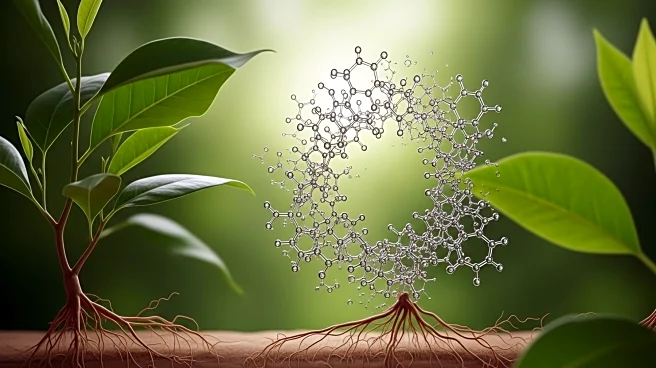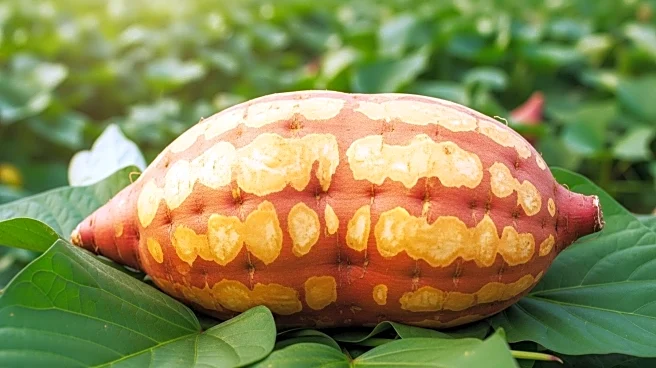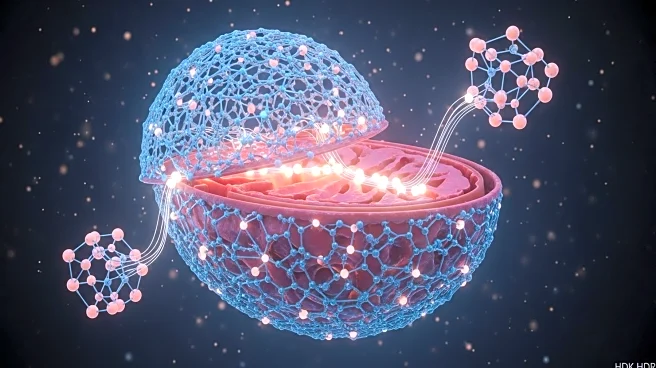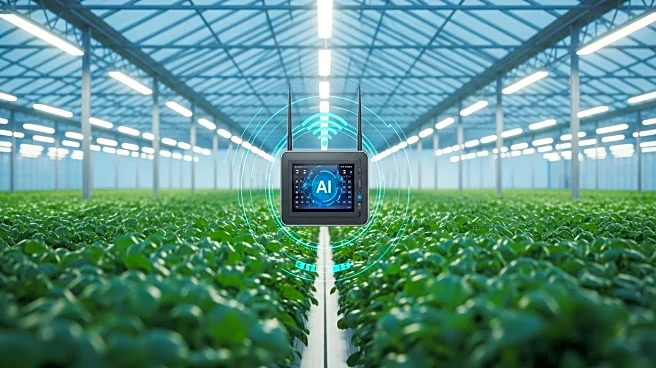What's Happening?
Recent research published in Nature Communications has identified a crucial enzyme, glycoside hydrolase 9C2 (GH9C2), in the legume Medicago truncatula, which plays a vital role in the establishment of symbiosis in nodules. The study, led by Cheng-Wu Liu, highlights the enzyme's function in modifying cell walls during the symbiosis process. Mutations in GH9C2 result in disordered infection-thread cell-wall structures, preventing bacterial colonization. The research demonstrates the necessity of the enzyme's cellulase activity and its interaction with other hydrolases, such as the pectin-degrading enzyme NPL, for successful symbiosis.
Why It's Important?
This discovery is significant for agricultural science and biotechnology, as understanding the mechanisms of symbiosis in legumes can lead to improved crop yields and sustainable farming practices. The enzyme GH9C2's role in cell-wall modification is crucial for the symbiotic relationship between legumes and bacteria, which is essential for nitrogen fixation. This process enhances soil fertility and reduces the need for chemical fertilizers, benefiting both the environment and agricultural productivity. The findings could pave the way for genetic engineering approaches to optimize symbiosis in other crops, contributing to food security and environmental conservation.
Beyond the Headlines
The research on GH9C2 not only advances scientific knowledge but also raises ethical considerations regarding genetic modification in agriculture. While enhancing symbiosis could lead to more sustainable farming, it also prompts discussions on the ecological impact and regulatory frameworks for genetically modified organisms. The study's implications extend to global food systems, where balancing innovation with environmental stewardship is crucial. As researchers continue to explore the genetic basis of symbiosis, the dialogue around responsible biotechnology practices will become increasingly important.











